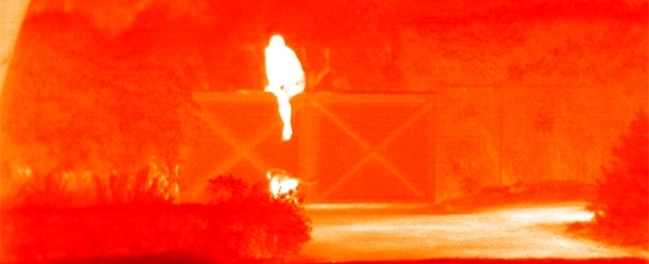
The conventional cameras use the light in the environment in order to create images. The thermal cameras, on the other hand, benefit from the radiation waves that every object above -273°C emits within its own temperature limits and that the human eye cannot see, as explained in the black body radiation law (you are now emitting radiation waves that you cannot see with your eyes when reading this blog post). What the thermal camera does is to detect these rays, which are emitted precisely over the objects depending on the temperature and have a different wavelength than we can see, to reveal the shapes of the objects depending on the temperature and to present them to us by converting them into pixels in a way that the human eye can see.
Firefighters use thermal cameras to select people from the area under heavy smoke. Likewise, thermal cameras are used in many fields such as the determination of heating in electrical installations, moisture and decay in buildings. We will base this article on the use of thermal cameras for ensuring security.
Since the thermal cameras draw the map of the temperature of the objects, they cannot provide the user with an extremely detailed object identification. Therefore, the manufacturers generally produce thermal cameras with 320x240 pixel resolution. This is far below the 12-megapixel conventional camera market. For this reason, it is useful to evaluate the thermal cameras on the basis of 'detection' rather than a 'diagnosis, elaboration' solution. Considering that the thermal cameras do not need any light in the environment and that a number of video analyses, especially border violations, are now applied in many thermal camera models, we can easily understand why the thermal camera solution has taken a serious place in the environmental security and border violation applications.
Since the purpose of the thermal cameras is to "detect" the violations of boundaries that we are responsible for ensuring security rather than detailed "diagnostics", we are naturally able to position the thermal cameras to observe an area as large as possible or an area far away from the camera. Of course, since the thermal camera manufacturers are aware of these purposes, they furnish the thermal cameras with appropriate lenses. Yes, the thermal cameras may be more expensive than the conventional cameras, but in the environmental security applications, both price and performance advantages can be achieved by using the thermal cameras (it should be noted that good engineering work is required in the background) rather than converting the boundaries of the facility into a conventional camera field (whose performance is limited in low light).